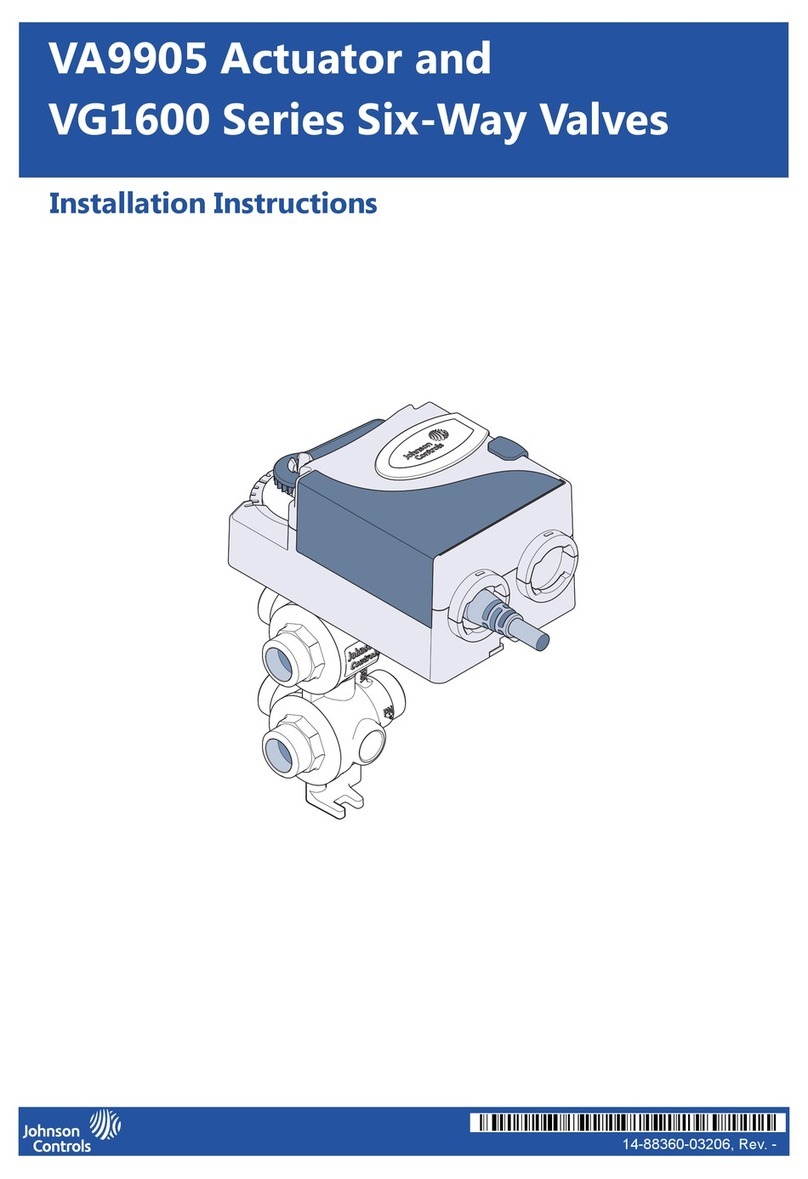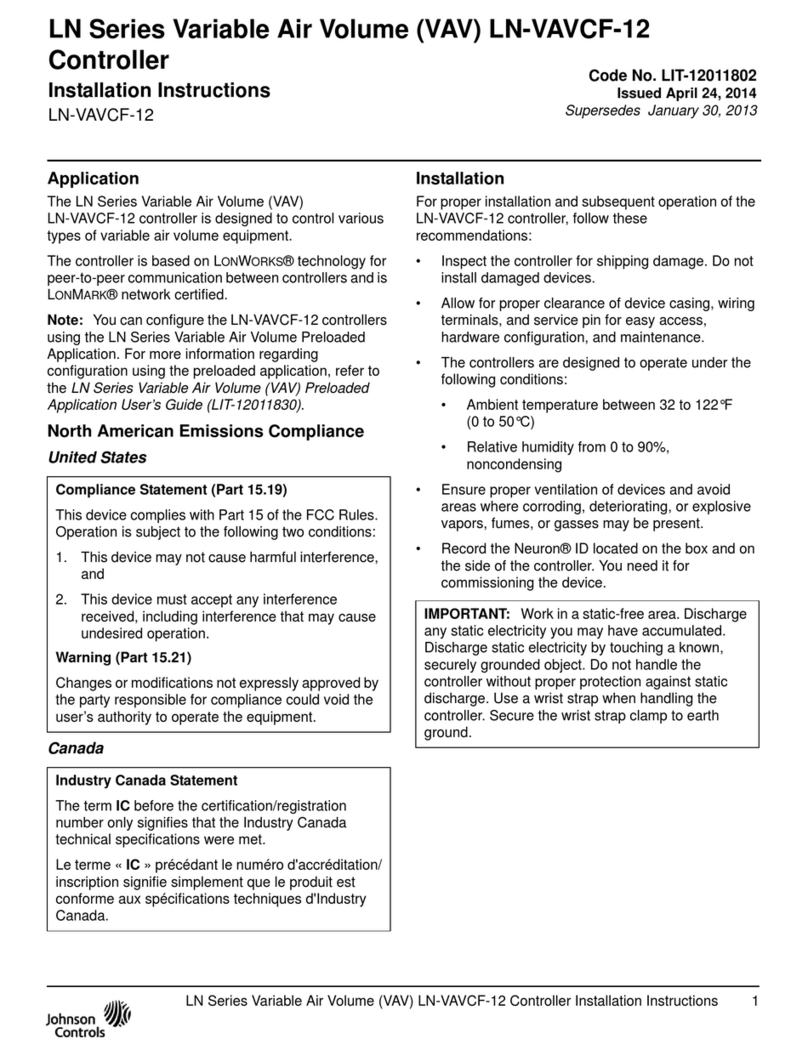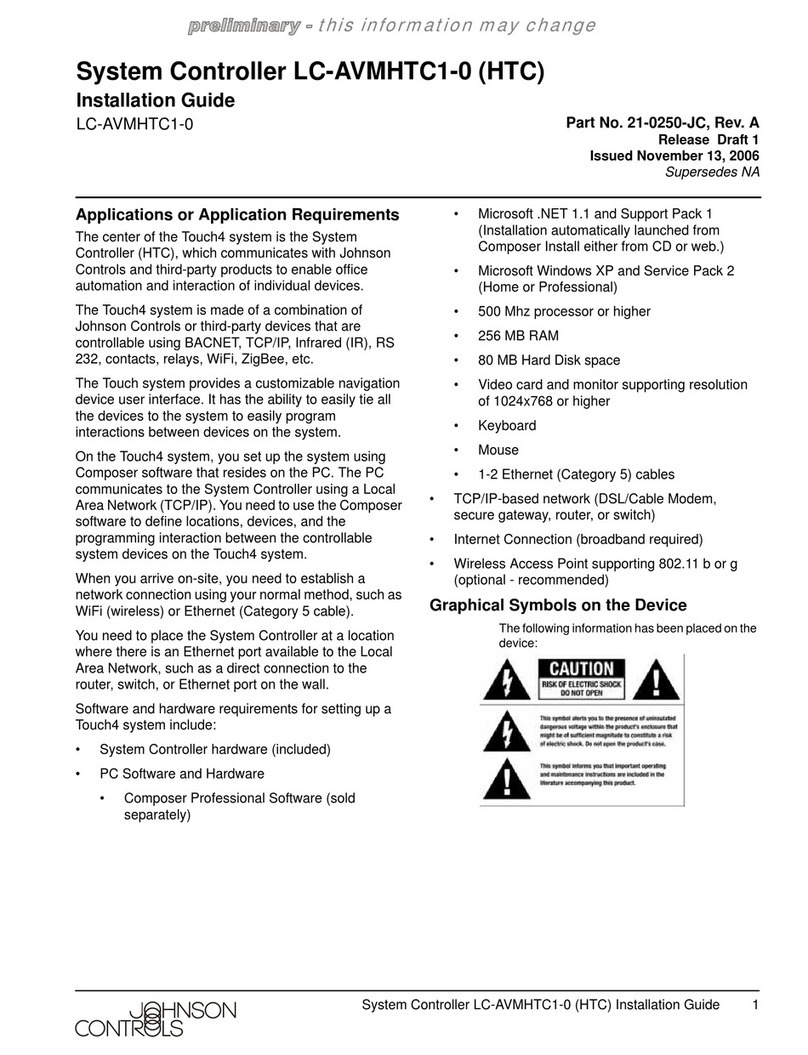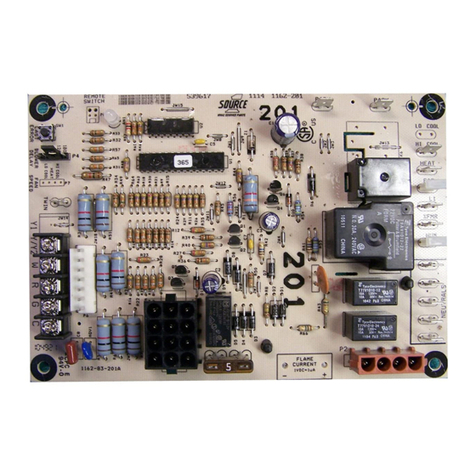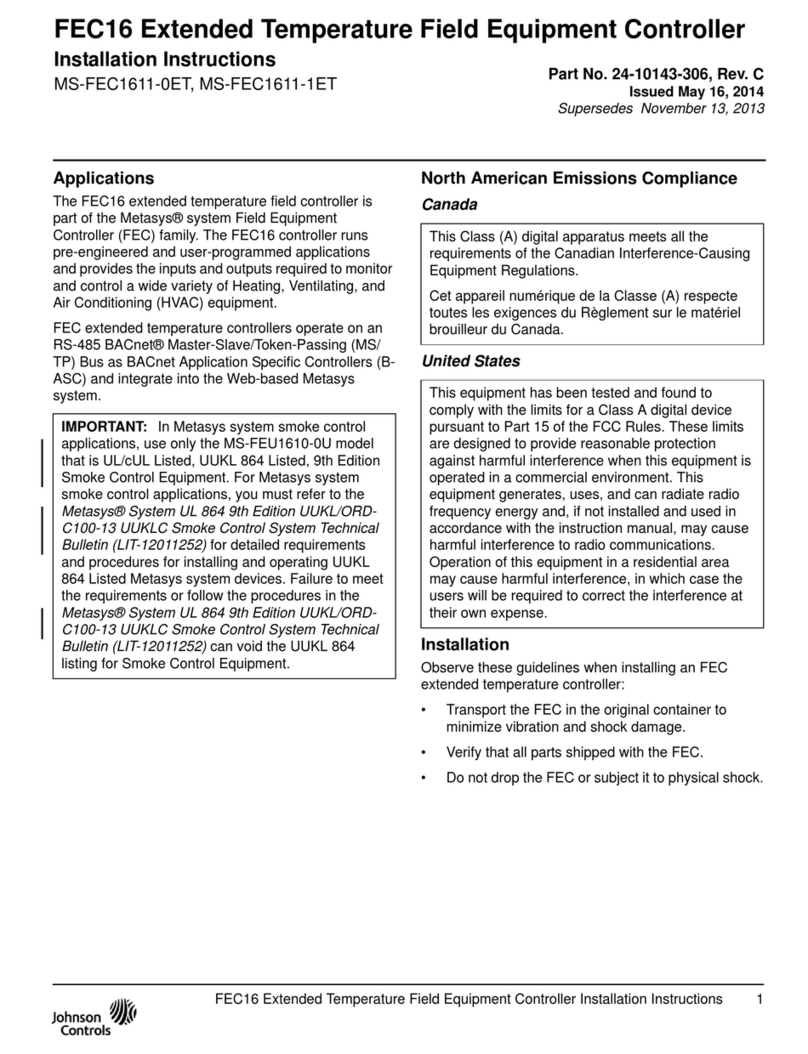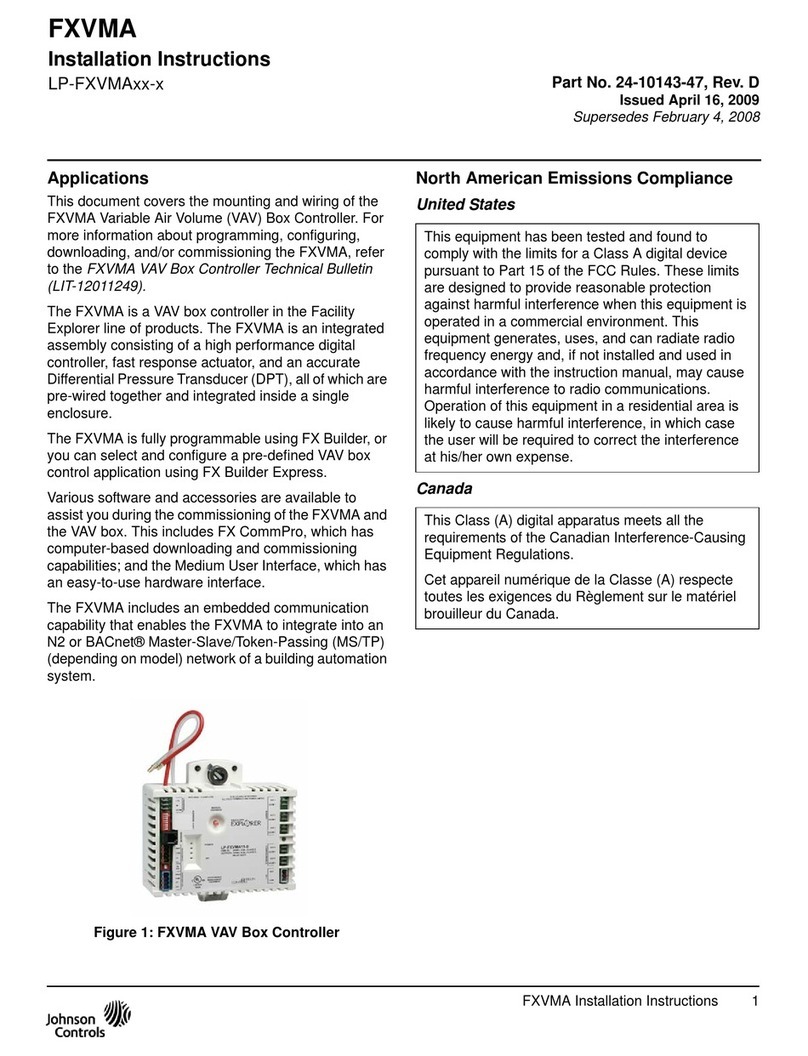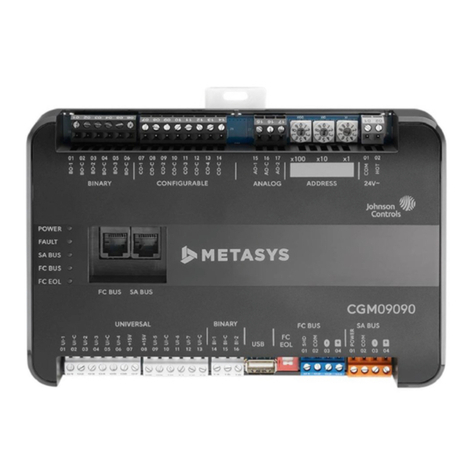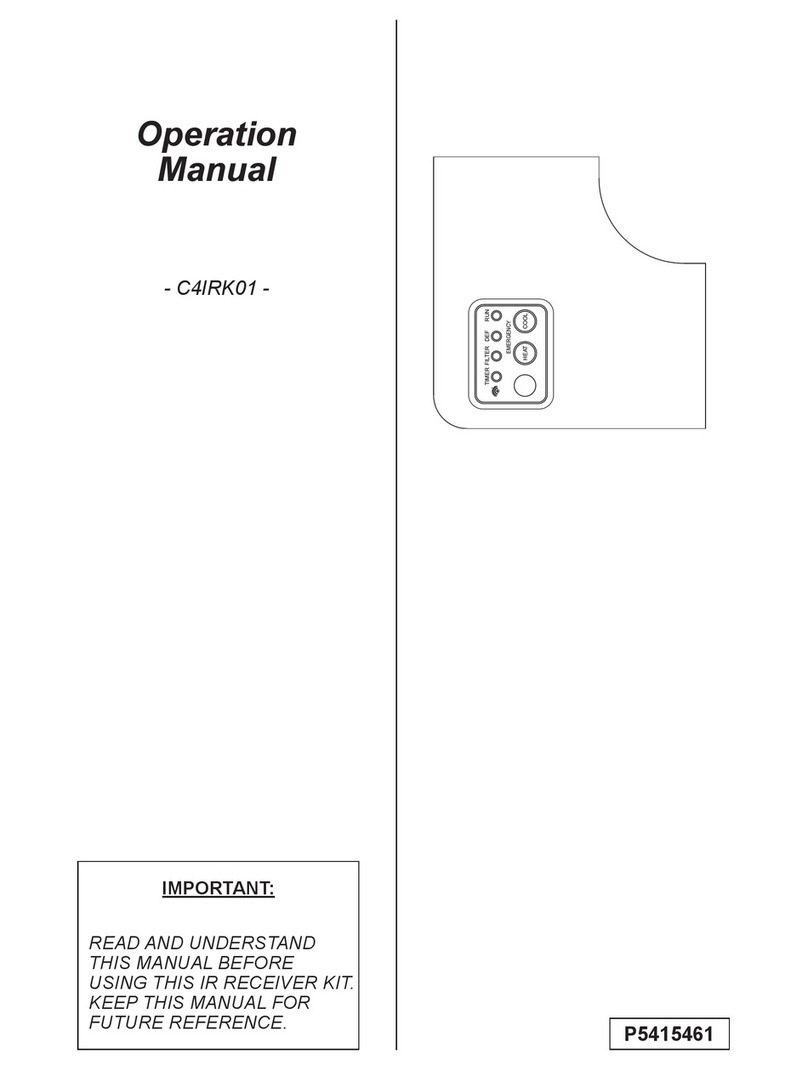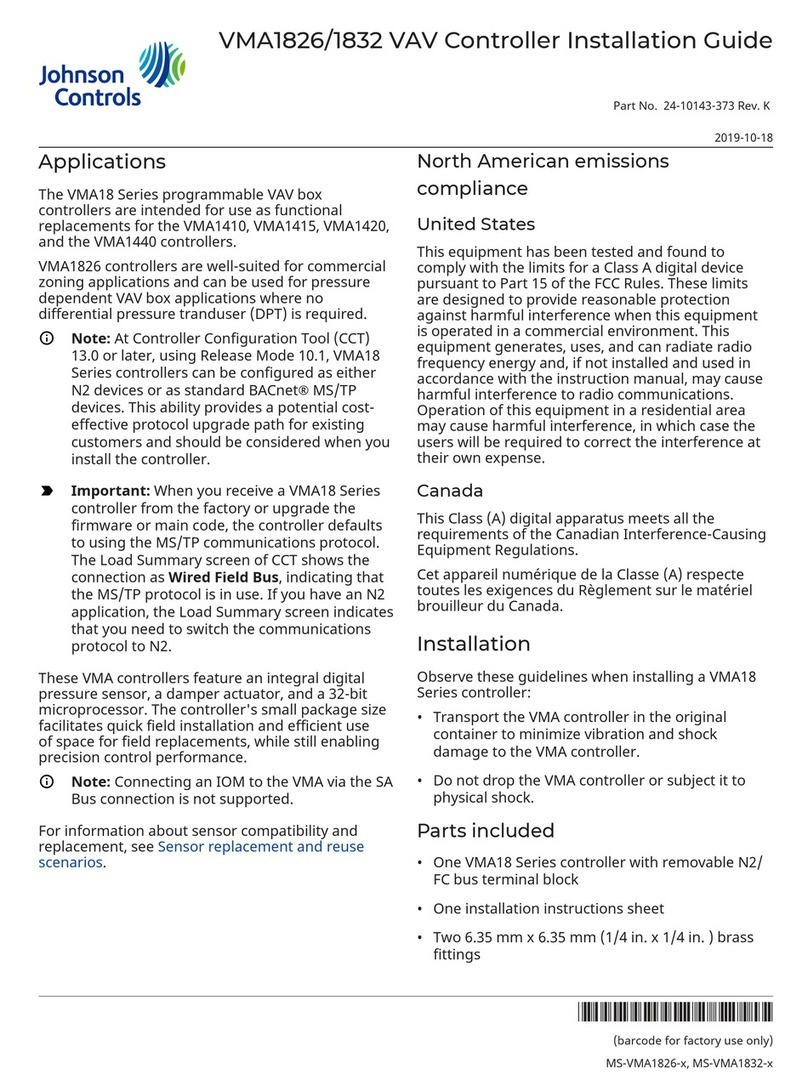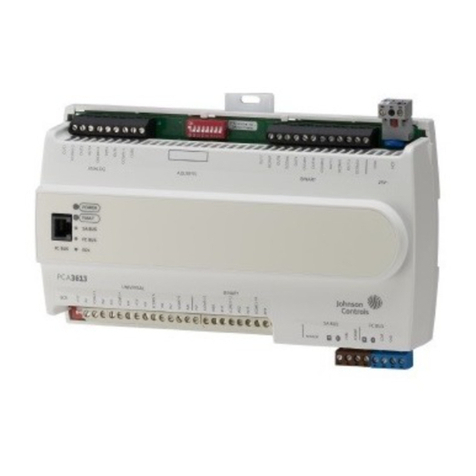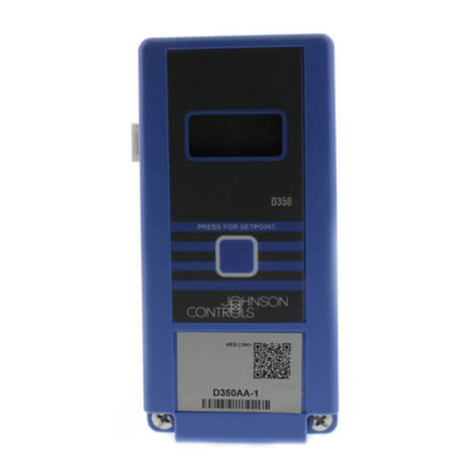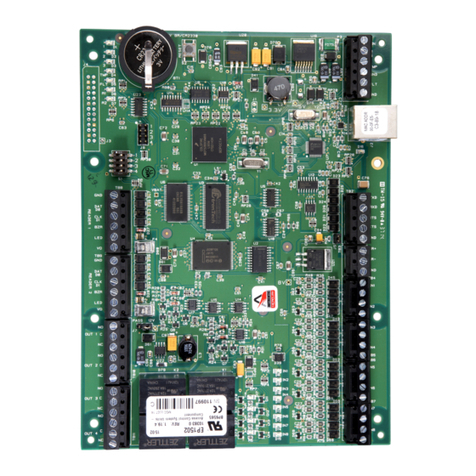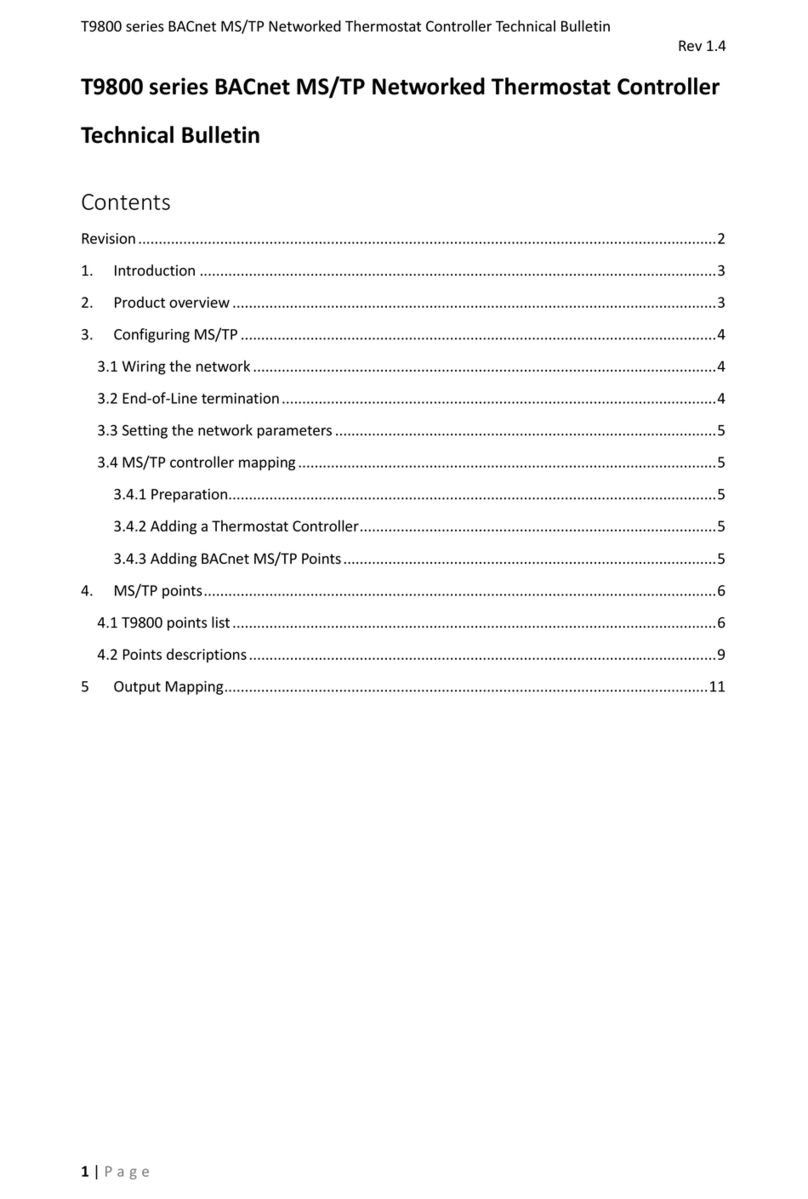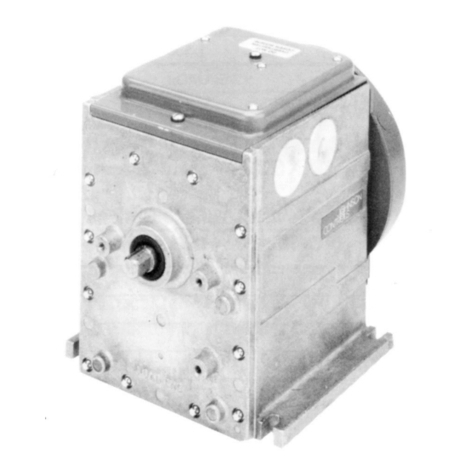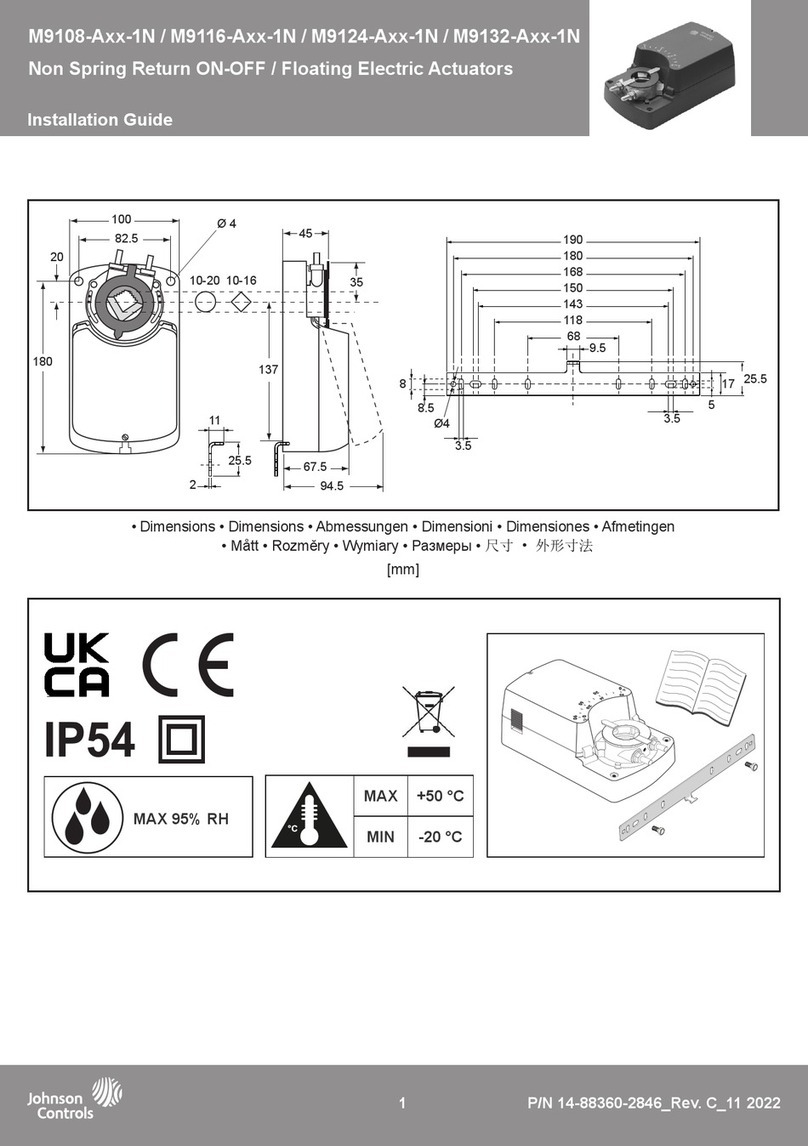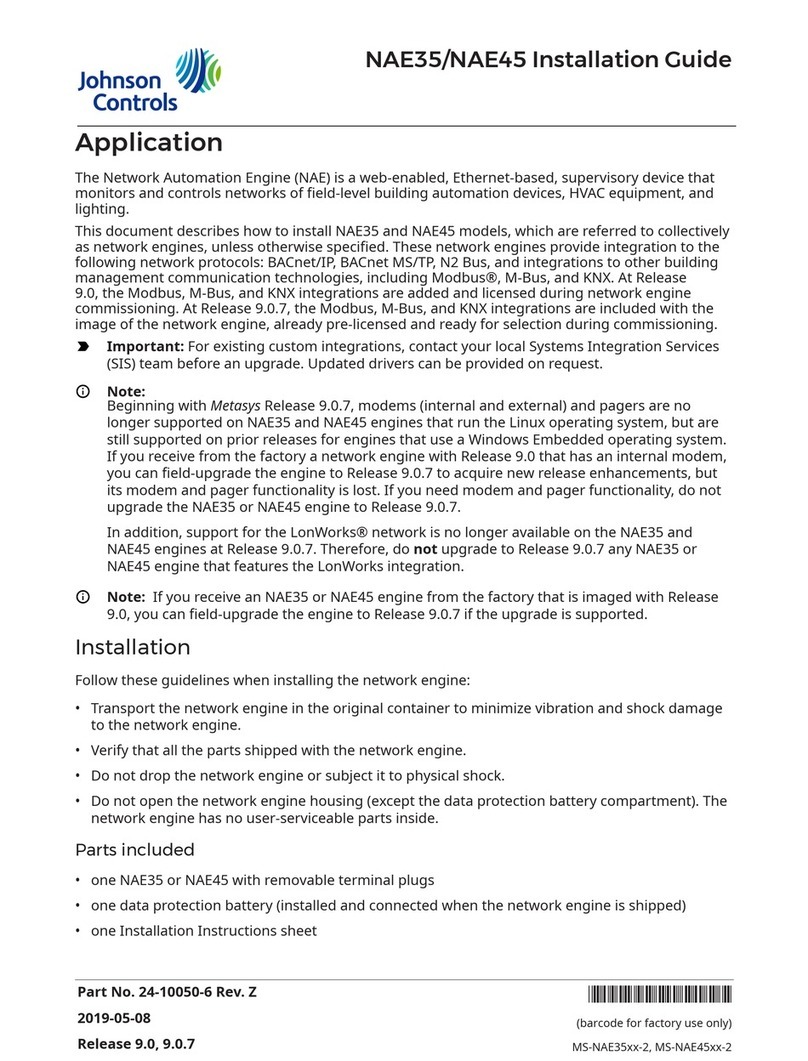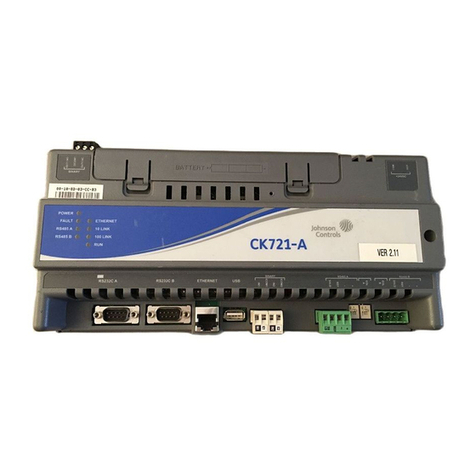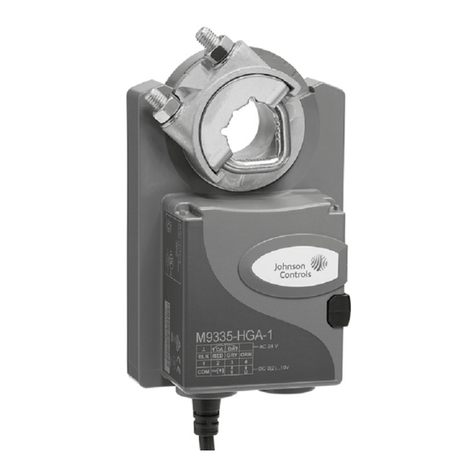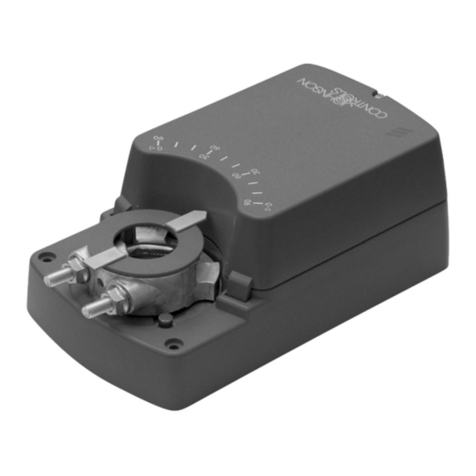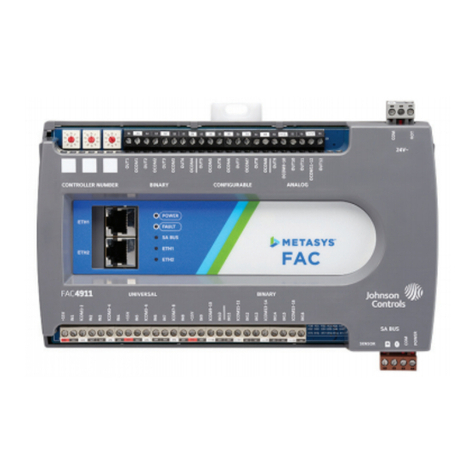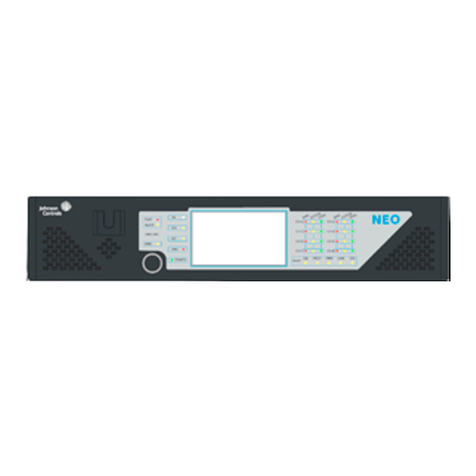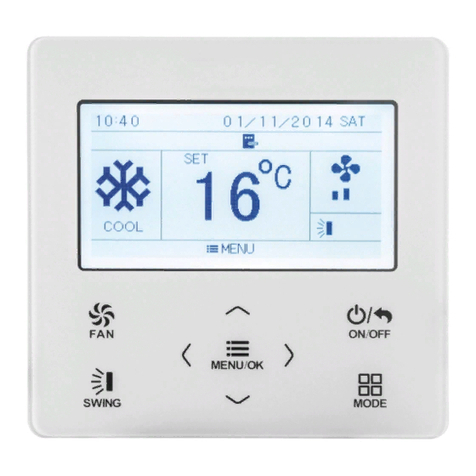
M9200 Series Electric Spring Return Actuator Product/Technical Bulletin 5
7. Keeping the actuator flat, evenly hand tighten each
clamp nut onto the U-bolt. Use a 10 mm nut driver
or adjustable wrench to finish securing the U-bolt
to the damper shaft.
8. Turn the manual crank CW to release the spring,
and remove the manual crank. (The actuator will
spring return to its starting position.)
9. Verify that the actuator rotates freely throughout
the range. (This can be done by applying a full
stroke control signal or reinserting the manual
crank and turning it CW to rotate the coupler to the
fully open position.)
R
otation Range
The actuator is factory set for 0 to 93° rotation. The
rotation range is changed by repositioning the coupler
and adjusting the rotation limiters. This can be done by
using an input signal or the manual crank.
To change the rotation range using the manual crank:
1. Push the manual crank into the manual override
gear firmly, and wind in a CW direction until the
position indicator reaches the 45° position.
IMPORTANT: Turn the manual crank in a
CW direction only, unless locking a
new position.
2. Lock this position by winding the manual crank
1/4 turn CCW or until a slight resistance is felt.
3. Use a 7 mm nut driver to loosen the screws on the
rotation limiter. (See Figure 7.)
Note: Rotation limiters are shown
factory set in the fully down
position for 90° rotation.
0
30
60
90
0
30
Limit Stop
Screws
(2 on Each
Limiter)
Rotation
Limiters (2)
0
10
30
20
(Increments
correspond
to those on
the opposite
side.)
Figure 7: Rotation Limiters
4. Slide the rotation limiter to the desired position,
and retighten the screws to a maximum of
30 lb·in (3.4 N·m).
Examples of rotation limiter adjustments:
For a range of 30°, adjust both limiters fully up.
•To set a rotation range of 45°, adjust
one rotation limiter to 30° and the other to 15°.
•To set a range of 60°, adjust one limiter to 30°,
and leave the other at 0°.
5. Reinsert the manual crank into the manual
override gear.
6. Repeat Steps 2 through 5 to set the rotation range
for the second rotation limiter.
7. Release the manual crank spring lock by winding it
1/4 turn in a CW direction.
8. Remove the manual crank, and return it to its
original position on the actuator cover.
Note: When changing the rotation range on models
with auxiliary switches, one or both switches
may need to be adjusted. (See
Auxiliary
Switches
section.)
Feedback Signal
The feedback signal will vary with a change to the
rotation range. The resistance feedback is reduced
corresponding to the reduced rotation range for the
AGD and AGE models.
For the HGA, HGC, JGA, and JGC models, a change
to the rotation range changes the feedback signal and
the operating range proportionally. (See Figure 8.)
90°
90°
0.0V
2.0V
10.0V
8.7V 7.3V 6.0V 4.7V 3.3V
10.0V
8.3V 6.7V 5.0V 3.3V 1.7V
75°
75°
60° 60°45°
45° 30°
30°
15°
15°
0°
0°
Rotation Range
2-10V
Feedback
0-10V
Feedback
Direct
Acting
1000
Ω
135
Ω
113
Ω
667
Ω
90
Ω
45
Ω
167
Ω
Ω
Ω
0
0
833
Ω
68
Ω
23
Ω
0-135 ohms
Feedback
0-1000 ohms
Feedback
Ω
500 333
Ω
Direct or
Reverse
Acting
2-10V
Feedback
Reverse
Acting
0-10V
Feedback 0.0V 1.7V 3.3V 5.0V 6.7V 8.3V 10.0V
10.0V8.7V
7.3V
6.0V4.7V
3.3V
2.0V
Rotation Limiter
Adjustment
Rotation Limiter
Adjustment
Note: 0-135 ohms feedback is available on AGD models and
0-1000 ohms feedback on AGE models.
0-10V or 2-10V is available on HGA, HGC, JGA, JGC models.
Figure 8: Nominal Feedback Signal Relative to
Rotation Range
